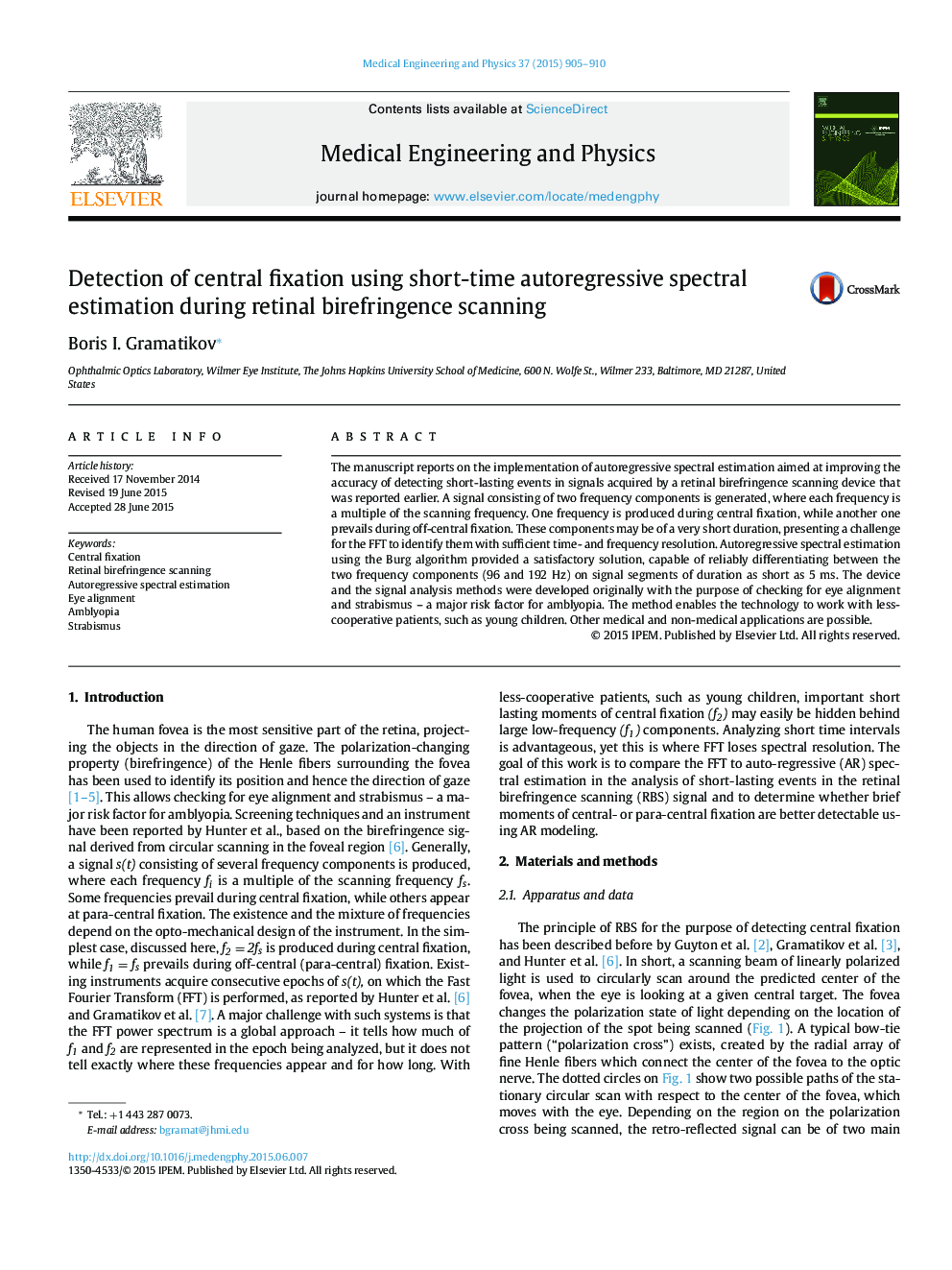| Article ID | Journal | Published Year | Pages | File Type |
|---|---|---|---|---|
| 875655 | Medical Engineering & Physics | 2015 | 6 Pages |
•Retinal birefringence scanning was used to detect central fixation.•Very short lasting episodes of central fixation, are difficult to detect in children.•Good resolution in both time- and frequency domains is needed for detection.•Autoregressive spectral estimation was compared to FFT in short-lasting intervals.•Autoregressive spectral estimation performed better than the FFT for 5 ms intervals.
The manuscript reports on the implementation of autoregressive spectral estimation aimed at improving the accuracy of detecting short-lasting events in signals acquired by a retinal birefringence scanning device that was reported earlier. A signal consisting of two frequency components is generated, where each frequency is a multiple of the scanning frequency. One frequency is produced during central fixation, while another one prevails during off-central fixation. These components may be of a very short duration, presenting a challenge for the FFT to identify them with sufficient time- and frequency resolution. Autoregressive spectral estimation using the Burg algorithm provided a satisfactory solution, capable of reliably differentiating between the two frequency components (96 and 192 Hz) on signal segments of duration as short as 5 ms. The device and the signal analysis methods were developed originally with the purpose of checking for eye alignment and strabismus – a major risk factor for amblyopia. The method enables the technology to work with less-cooperative patients, such as young children. Other medical and non-medical applications are possible.
